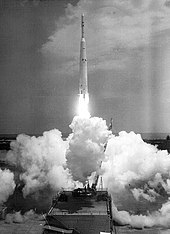
Spacecraft propulsion is any method used to accelerate spacecraft and artificial satellites. In-space propulsion exclusively deals with propulsion systems used in the vacuum of space and should not be confused with space launch or atmospheric entry.

Spaceflight is an application of astronautics to fly spacecraft into or through outer space, either with or without humans on board. Most spaceflight is uncrewed and conducted mainly with spacecraft such as satellites in orbit around Earth, but also includes space probes for flights beyond Earth orbit. Such spaceflight operates either by telerobotic or autonomous control. The more complex human spaceflight has been pursued soon after the first orbital satellites and has reached the Moon and permanent human presence in space around Earth, particularly with the use of space stations. Human spaceflight programs include the Soyuz, Shenzhou, the past Apollo Moon landing and the Space Shuttle programs, with currently the International Space Station as the main destination of human spaceflight missions while China's Tiangong Space Station is under construction.
Project Vanguard was a program managed by the United States Navy Naval Research Laboratory (NRL), which intended to launch the first artificial satellite into low Earth orbit using a Vanguard rocket. as the launch vehicle from Cape Canaveral Missile Annex, Florida.
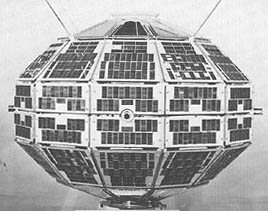
Alouette 1 is a deactivated Canadian satellite that studied the ionosphere. Launched in 1962, it was Canada's first satellite, and the first satellite constructed by a country other than the Soviet Union or the United States. Canada was the fourth country to operate a satellite, as the British Ariel 1, constructed in the United States by NASA, preceded Alouette 1 by five months. The name "Alouette" came from the French for "skylark" and the French-Canadian folk song of the same name.

A sounding rocket or rocketsonde, sometimes called a research rocket or a suborbital rocket, is an instrument-carrying rocket designed to take measurements and perform scientific experiments during its sub-orbital flight. The rockets are used to launch instruments from 48 to 145 km above the surface of the Earth, the altitude generally between weather balloons and satellites; the maximum altitude for balloons is about 40 km and the minimum for satellites is approximately 121 km. Certain sounding rockets have an apogee between 1,000 and 1,500 km, such as the Black Brant X and XII, which is the maximum apogee of their class. Sounding rockets often use military surplus rocket motors. NASA routinely flies the Terrier Mk 70 boosted Improved Orion, lifting 270–450-kg (600–1,000-pound) payloads into the exoatmospheric region between 97 and 201 km.
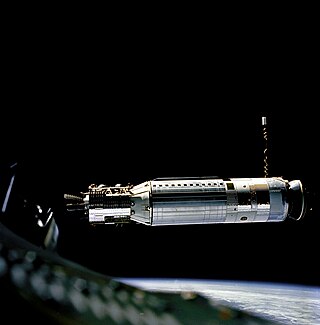
The RM-81 Agena was an American rocket upper stage and satellite bus which was developed by Lockheed Corporation initially for the canceled WS-117L reconnaissance satellite program. Following the split-up of WS-117L into SAMOS and Corona for image intelligence, and MIDAS for early warning, the Agena was later used as an upper stage, and an integrated component, for several programs, including Corona reconnaissance satellites and the Agena Target Vehicle used to demonstrate rendezvous and docking during Project Gemini. It was used as an upper stage on the Atlas, Thor, Thorad and Titan IIIB rockets, and considered for others including the Space Shuttle and Atlas V. A total of 365 Agena rockets were launched between February 28, 1959 and February 1987. Only 33 Agenas carried NASA payloads and the vast majority were for DoD programs.

Landsat 1 (LS-1), formerly named ERTS-A and ERTS-1, was the first satellite of the United States' Landsat program. It was a modified version of the Nimbus 4 meteorological satellite and was launched on July 23, 1972, by a Delta 900 rocket from Vandenberg Air Force Base in California.

Telstar 1 is a defunct communications satellite launched by NASA on July 10, 1962. It was the satellite that allowed the first live broadcast of television images between the United States and Europe. Telstar 1 remained active for only 7 months before it prematurely failed due to Starfish Prime, a high-altitude nuclear test conducted by the United States. Although the satellite is no longer operational, it remains in Earth orbit.
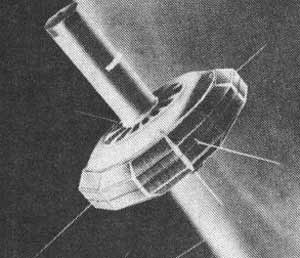
The Transit Research and Attitude Control (TRAAC) satellite was launched by the U. S. Navy from Cape Canaveral along with Transit 4B on November 15, 1961.

Starfish Prime was a high-altitude nuclear test conducted by the United States, a joint effort of the Atomic Energy Commission (AEC) and the Defense Atomic Support Agency. It was launched from Johnston Atoll on July 9, 1962, and was the largest nuclear test conducted in outer space, and one of five conducted by the US in space.

Ariel 3 was a satellite in the Ariel programme, a satellite partnership between the US and UK. Three of the onboard experiments continued research from the first two missions and two experiments were designed for new research topics. It was launched from Vandenberg Air Force Base on 5 May 1967, making it the first satellite of the program to launch from the West coast. Ariel 3 was shut down in September 1969, and re-entered the Earth's atmosphere 14 December 1970.
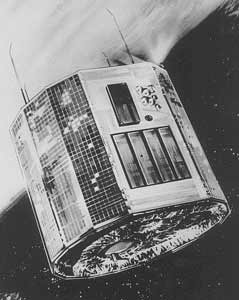
Ariel 5 was a joint British and American space telescope dedicated to observing the sky in the X-ray band. It was launched on 15 October 1974 from the San Marco platform in the Indian Ocean and operated until 1980. It was the penultimate satellite to be launched as part of the Ariel programme.
Ariel was a British satellite research programme conducted between the early 1960s and 1980s. Six satellites were launched as part of the programme, starting with the first British satellite, Ariel 1, which was launched on 26 April 1962, and concluding with the launch of Ariel 6 on 2 June 1979. The launch of Ariel 1 made Britain the third country to have a satellite orbiting the Earth. The first four were devoted to studying the ionosphere, the remaining two to X-ray astronomy and cosmic-ray studies.
Kosmos 5, also known as 2MS #2 and occasionally in the West as Sputnik 15 was a scientific research and technology demonstration satellite launched by the Soviet Union in 1962. It was the fifth satellite to be designated under the Kosmos system, and the third spacecraft to be launched as part of the MS programme, after Kosmos 2 and Kosmos 3. Its primary missions were to develop systems for future satellites, and to record data about artificial radiation around the Earth.
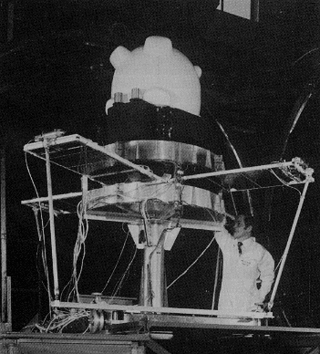
Ariel VI, known pre-launch as UK-6, was a British and American satellite launched in 1979 as part of the Ariel programme. It was operated by the Science Research Council, which became the Science and Engineering Research Council in 1981. Ariel VI was used for astronomical research and provided data until February 1982. It was the last Ariel satellite to be launched.
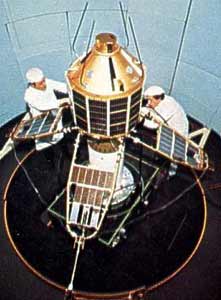
Ariel 4, known pre-launch as UK 4, was a British ionospheric research satellite, which was operated by the Science and Engineering Research Council. It was launched 11 December 1971, aboard an American Scout rocket. Experiments were designed to meet one scientific objective, making it the first mission-oriented satellite for the UK. It was also the first satellite in the Ariel programme to contain an American experiment. Ariel 4 decayed from orbit on 12 December 1978
Henry Elliot, was a British space scientist, and Emeritus Professor of Physics, at the University of London.

STARAD was a radiation-monitoring satellite used to track the artificial radiation belt created by the Starfish Prime high-altitude nuclear test.

